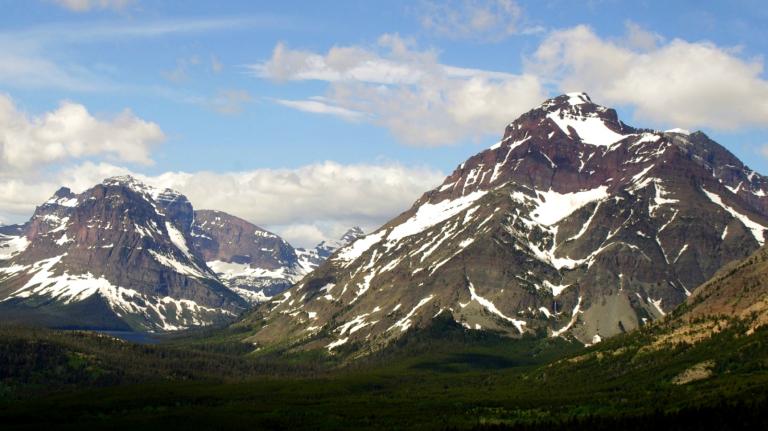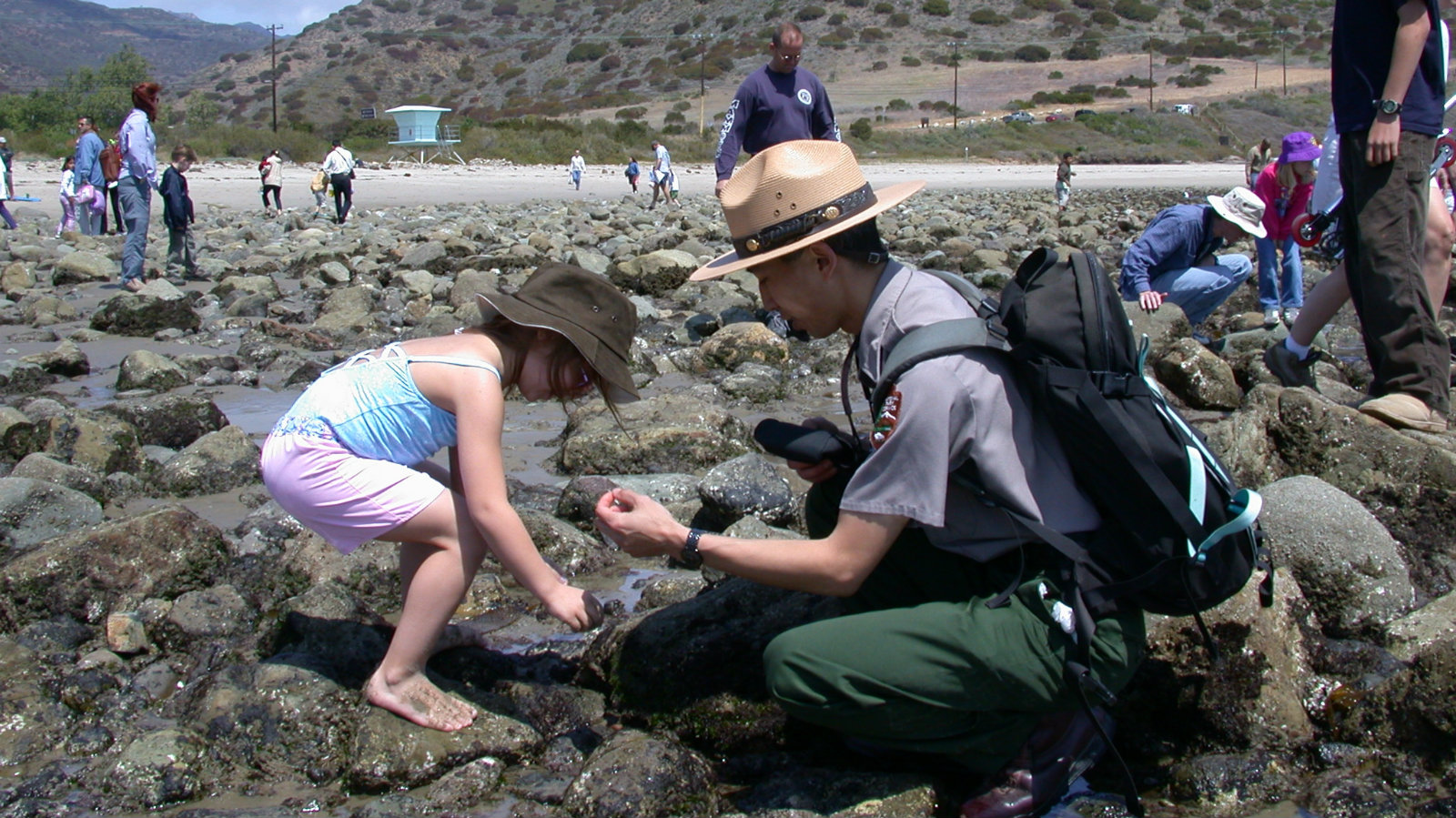On their 100th anniversary, Grist is exploring America’s national parks and the humans who use them. See the full series.
Jonathan Jarvis is a National Park Service lifer. Starting 40 years ago as a seasonal interpretive ranger in Washington, D.C., he now runs the show as the National Park Service director. In between he’s had stints as a park biologist, superintendent and regional manager at parks across the West and Alaska.
Suffice to say he knows a thing or two about the agency and the obstacles it faces. So when Jarvis says climate change is the biggest challenge the National Park Service has faced in its 100-year history, it’s worth listening to his insights.
Climate Central sat down with Jarvis to talk about the types of threats that climate change poses, what the National Park Service is doing to confront those threats and how he hopes to inspire the next generation of stewards to usher parks into a new century of management practices.
Q. Climate Central: Where does climate change rank as a threat to the National Park Service? Why?
A. Jarvis: Fundamentally, it’s the biggest challenge the National Park Service has ever faced. I put it there because it fundamentally changes the way we are going to manage our national parks into the future. It’s making us rethink the whole paradigm under which we manage. That makes it really complicated.
Q. How do you balance the mission of the National Park Service with the realities that climate change poses?
A. Since the 1960s and the Leopold Report, we’ve managed our national parks around a certain paradigm. It’s been to eliminate exotic species, preserve natural processes as much as possible, re-restore native species, and let nature do its thing.
We know anthropogenic climate change is changing the natural systems that parks preserve. We’re seeing fires burn longer — particularly in the West — we’re seeing species arrive that may be coming to the parks as refugia that we would consider under our current paradigm as exotic, we’re seeing post-disturbance from fires or storms that ecosystems are not recovering in the same way they have in the past. So there’s much more volatility in the system.
[grist-related tag=”national-parks-100″ limit=”4″ label=”Grist’s greatest hits on national parks and people:”]
Then sea level rise in the coastal environment has an impact on cultural resources, impacts to barrier islands, impacts to marshes. We’re seeing the effects of all of those things. Now we’re faced with managing parks under a much more difficult, complicated system. It’s harder for us to visualize what that future is we’ll be managing. It’s managing for multiple futures. We’re just beginning to build our policy and procedures.
Q. Does the National Park Service then need a new mission? Does climate change mean you need a new approach to management?
A. I don’t think we need a new mission. We do have a unique responsibility, though.
National parks have become baselines that we can use to measure the impacts of climate change. They’re particularly important because they let us understand specifically how climate is affecting them in contrast to other parts of the U.S. that are stressed by many other factors.
Fortunately, we’ve invested a decade or more in monitoring so we have a really strong baseline to understand climate change. We have our own carbon footprint we’re working on in terms of setting exemplar standards for renewable energy and water conservation. We can help the public understand what they can do to mitigate their impact on the climate.
We have an incredibly important role in communication. We tell complicated stories, whether they’re about civil rights, the Civil War or Flight 93. Americans turn to us to tell these stories. You can look back on the reintroduction of fire to national parks as a public relations challenge. Before, we had convinced the American public that fire was bad. It killed Bambi’s mother. We had to work hard to change that thinking, to convince the public that fire is an important part of natural ecosystem. At Crater Lake National Park, they used to make us scrape burned bark off the sides of Ponderosa pines that faced the roads. Twenty years later, people can be sitting in a picnic area with a fire burning across the road.
Last but not least is this whole adaptation strategy around how we manage the parks. One component is understanding parks and how they fit in the larger landscape of public lands and communities. One of my scientists asked me 10 years ago whether I was willing to put a sprinkler system on the giant sequoias. I countered with, “tell me where the next place is that giant sequoias will grow and maybe we should plant some.” Those trees are thousands of years old so where do we plant giant sequoias now so that thousands of years from now, there are still giant sequoias?
Q. Have natural or cultural resources been lost due to climate change yet? If not, do you think that will happen in the near future?
A. A few years ago, we were holding a meeting around climate change and the question of loss came up. Half the room was full of biologists and half was full of archeologists and cultural resources folks. We’re talking about sea level rise and resources like Fort Jefferson in Dry Tortugas in Florida Keys. It’s basically at sea level now and based on sea level rise, it’s not going to be maintainable over the next 50-75 years. The cultural resources folks said, “we could go in do accurate documentation, photo documentation, building surveys and get this record. Then we let it go.” The biologists said, “at least you have a process by which you can say goodbye. We don’t have that in a biological world.”
There will be losers in climate adaptation. We’re not there yet in terms of our ability to say goodbye to a species, but it’s something we’re going to have to face.
Q. What are the challenges of budgeting for climate change preparedness when it’s so politically contentious?
A. It is hard to get Congress to appropriate much money because it’s politically controversial, so we have to look at other ways to accomplish that, either through private philanthropy or working in partnerships with other organizations. At the individual park level, some parks are really going to see that climate change impacts them more quickly and significantly than others so we’re triaging across the systems in terms of how we focus on it.
We’re also taking advantage of opportunities like building resilience into our coastal systems through things like recovery funds from the Gulf oil spill and Hurricane Sandy. We’re rebuilding our barrier islands as a hedge against sea level rise and the storm surge we anticipate in the next century. We’re doing a lot of work that doesn’t get labeled as climate adaptation but absolutely, we’ll work to prepare the system.
I hope at some point that Congress recognizes we need to put some investment and effort into climate change.
Q. What do you want your legacy to be when it comes to climate change?
A. Washed out road at Maryland’s Assateague Island National Seashore in the wake of Hurricane Sandy. Park managers have started to construct roads using shells and local materials and develop easily moveable structures in response to sea level rise.
I’ll leave that up to the historians. I started making it clear where I was around climate change a long time ago. When I was the park biologist at North Cascades in the mid-80s, we were already starting to talk about climate impacts. When I went to the Pacific West as the regional director in 2002, during George W. Bush’s administration when they really didn’t want to talk about climate change, I was holding public workshops on climate change and bringing in park superintendents to talk about three big questions: what do you see now; how should we talk about it; and what is our role as the National Park Service dealing with climate change?
The goal of our centennial is not to scare everyone to death about climate change. It’s about engaging the next generation and empowering them to take on this stewardship role for the next century. That’s what it’s all about.
What we want this next generation to do is engage in a deep way with these places and step into the role of stewards to take them into a complicated future. Recognizing how valuable these places are — not to be frozen in time, because that’s not possible anymore — but to be managed intelligently so that future generations can enjoy them and benefit from their wise stewardship.



